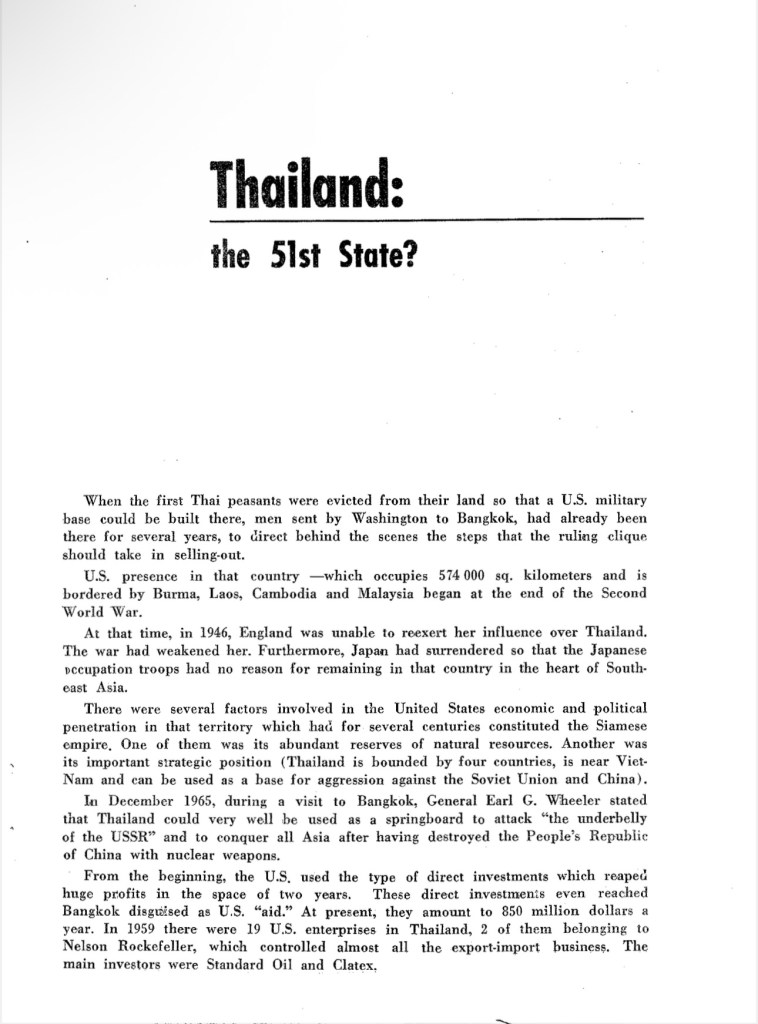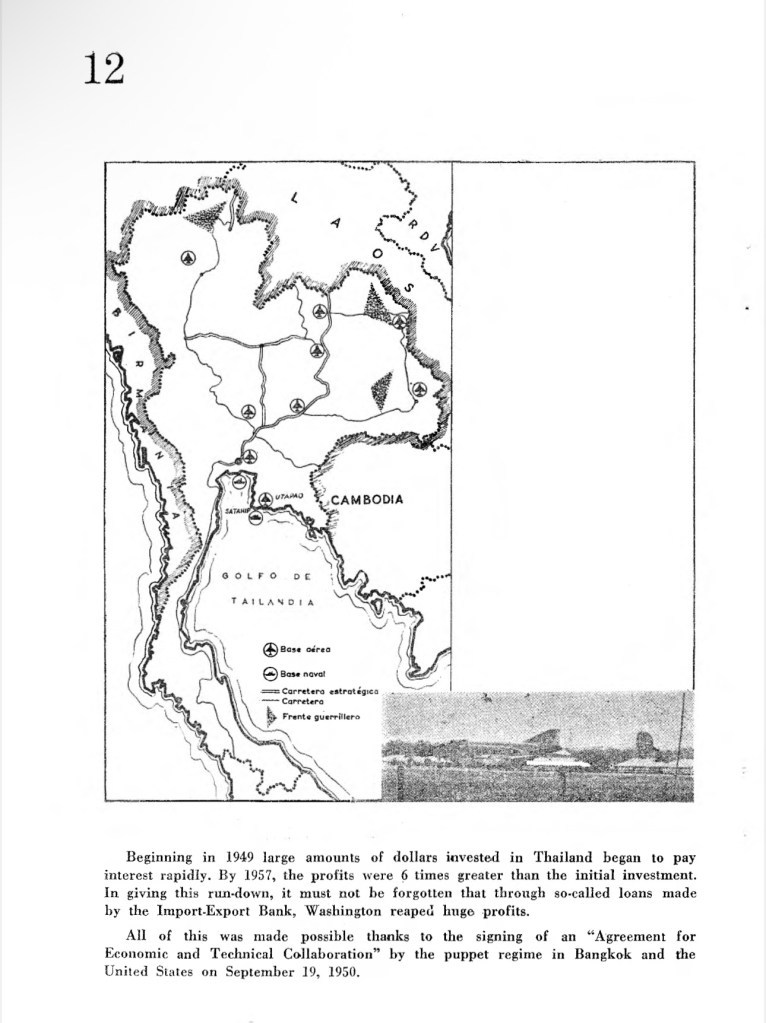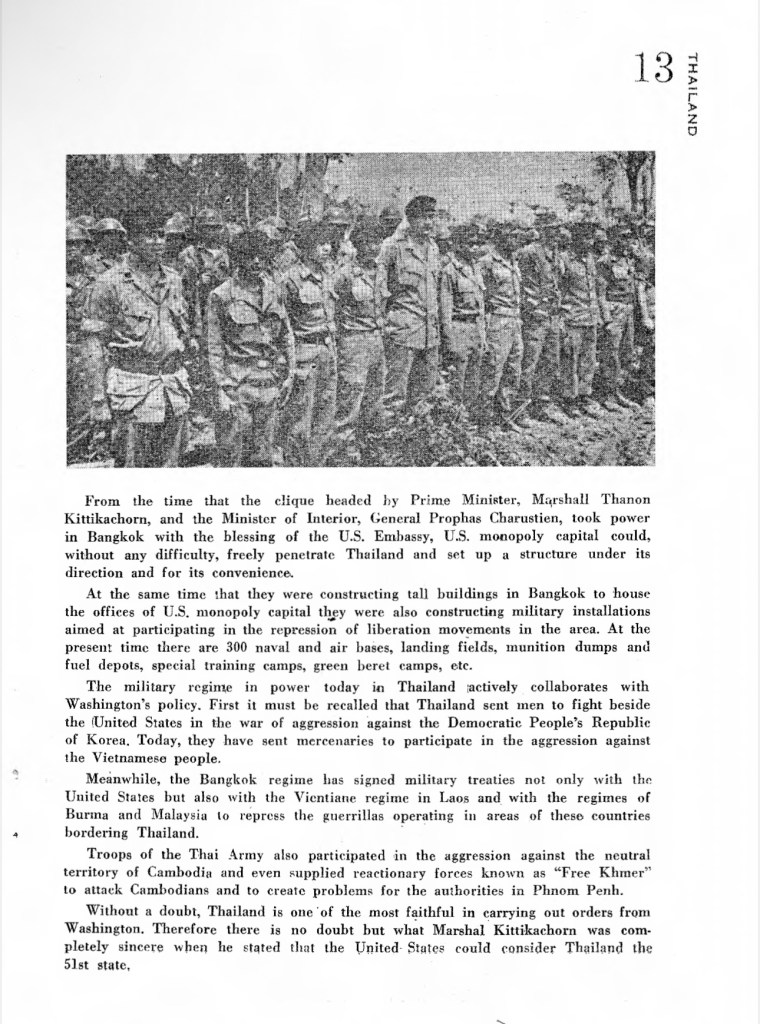Show notes: The CIA STILL Ships in the Drugs!
Tag: Laotian Civil War
Operation Paper: The United States and Drugs in Thailand and Burma
Wisconsin will now require Asian American history to be taught in schools
Wisconsin will now require Asian American history to be taught in schools
Related:
Why are the Hmong in Wisconsin?
Unlike past immigrant groups, the Hmong were political refugees who fled their country because of war and persecutions. The Hmong refugees were legally admitted to the United States by the U.S. government and were initially resettled by church organizations such as Catholic Charities and Lutheran Social Service. Area churches sponsored Hmong families here in Wisconsin and other states in the U.S. The 2010 U.S. Census has shown that there are 49,240 Hmong Americans living in Wisconsin. Community with significant Hmong population include: Milwaukee, Wausau, Sheboygan, La Crosse, Madison, Eau Claire, Green Bay, Appleton, Oshkosh, Manitowoc, Stevens Point, Wisconsin Rapids, Menomonie, and Fond du Lac.
A Look Back at the CIA’s Dirty War in Laos
Laos was (and remains) a very poor country that at the time of the encounter with the CIA was predominantly composed of illiterate peasants working the land in the form of subsistence agriculture. It was colonized by France in 1893; however, unlike in neighboring Vietnam, and to a lesser extent in Cambodia, there was hardly any investment or development of infrastructure or education in Laos. There was no Laotian “collaborating elite,” as was the case with French-speaking and French-educated Vietnamese Catholics. Furthermore, though a small place with a small population, Laos contains an estimated 49 different ethnic groups. A lot of the tension was more along tribal than ideological lines. The CIA, under the leadership in Laos of its highly strategically capable director, Bill Lair, chose to ally particularly with one of the tribes, the Hmong, under their charismatic but brutal head, Vang Pao. After the U.S. lost the war in Laos (at the time of the defeat by Vietnam, 1975), the promises made to the Hmong that they would be offered refuge and welfare in the U.S. were not kept. Though some did make it to the U.S., most Hmong today live in squalid conditions in camps in Laos or in neighboring Thailand.
Under what was code-named Operation Momentum, the CIA engaged in a sustained and relentless bombing campaign, starting in 1961. There was more bombing of Laos than there was of Germany or Japan during World War II. Throughout the war there was on average, the author states, one bombing attack every eight minutes. Ultimately, some 10% of the Laotian population was killed and 25% made refugees. The author reveals that according to a secret U.S. government assessment of the bombing campaign, 80% of all casualties were civilians. With much of the fighting concentrated in the Plain of Jars, he estimates that the population in the course of the 1960s declined from 150,000 to 9,000 in that region. But the narrative of the end of the war does not bring to an end the tragic story of the bombing: One-third of the bombs remained unexploded, and they continue killing and maiming to this day.
…
Operation Momentum transformed the CIA from an organization that primarily gathered intelligence into one that engaged in killing and the covert overthrow of regimes considered unfriendly to the U.S. The CIA tried on a number of occasions to assassinate Fidel Castro. The overthrow of “unfriendly” democratically elected regimes included that of the prime minister of Iran, Mohammed Mossadegh. The CIA also provided political and military support to some of the world’s harshest dictators, such as Mohammad Reza Shah Pahlavi in Iran, Rafael Trujillo in Dominican Republic, Mobutu Sese Seko in Zaire (Congo) and Ferdinand Marcos in the Philippines.
Kissinger at 100: New War Crimes Revealed in Secret Cambodia Bombing That Set Stage for Forever Wars
A bombshell new investigation from The Intercept reveals that former U.S. national security adviser and Secretary of State Henry Kissinger was responsible for even more civilian deaths during the U.S. war in Cambodia than was previously known. The revelations add to a violent résumé that ranges from Latin America to Southeast Asia, where Kissinger presided over brutal U.S. military interventions to put down communist revolt and to develop U.S. influence around the world. While survivors and family members of these deadly campaigns continue to grieve, Kissinger celebrates his 100th birthday this week. “This adds to the list of killings and crimes that Henry Kissinger should, even at this very late date in his life, be asked to answer for,” says The Intercept’sNick Turse, author of the new investigation, “Kissinger’s Killing Fields.” We also speak with Yale University’s Greg Grandin, author of Kissinger’s Shadow: The Long Reach of America’s Most Controversial Statesman.
Kissinger at 100: New War Crimes Revealed in Secret Cambodia Bombing That Set Stage for Forever Wars
Russian Sappers Land in Laos to Clean Up Mess Made by US During Indochina Wars
Russian sappers have begun another round of explosives clearance operations in the Lao People’s Democratic Republic.
Russian Sappers Land in Laos to Clean Up Mess Made by US During Indochina Wars
Expanding on a previous entry re: CIA-trained Ukrainian paramilitaries
CIA-trained Ukrainian paramilitaries may take central role if Russia invades
While the covert program, run by paramilitaries working for the CIA’s Ground Branch* — now officially known as Ground Department — was established by the Obama administration after Russia’s invasion and annexation of Crimea in 2014, and expanded under the Trump administration, the Biden administration has further augmented it, said a former senior intelligence official in touch with colleagues in government.
Previously:
*Ground Branch: The CIA’s covert alternative to special operations
Ground Branch is a part of the CIA’s Special Activities Division**, which also includes Air Branch and Maritime Branch. As the author noted, GB paramilitary officers are primarily recruited from the special operations community. At one point known as a sort of good-old-boys network, Ground Branch was once heavily represented by former Marines. Later, GB became heavy with retired Delta Force sergeant majors. These days, things are a bit different, with the CIA preferring to contract younger former sergeants out of Army Special Forces who they can raise up through the ranks of the agency over a longer period of time.
…
GB has been very active in both Afghanistan and Iraq during the Global War on Terror, but their actions are rarely reported by the press. Even less known is the role that GB played in the Libyan Civil War, when Gaddafi was overthrown after President Obama signed an executive action authorizing clandestine support to rebel factions. Today, GB officers are active in northern Syria with the Kurdish YPG militia, where they provide tactical support in the war against ISIS.
**CIA Special Activities Division (SAD): 12 Things You Never Knew
There are two separate groups that now operate under the CIA:
1. SAD/SOG: The elite unit was established for tactical paramilitary operations.
2. SAD/PAG: The separate group is used for covert political action.
…
In addition, its believed that Political Action Group members clandestinely organize various government protests and demonstrations in hostile nations.
Top 3 unknown proxy wars between the Soviet Union and U.S.
During the Cold War, the two world powers clashed in dozens of conflicts around the world. However, if Afghanistan, Vietnam and Angola are known to everyone, proxy wars in Ethiopia, Laos and Congo have been largely forgotten.
Top 3 unknown proxy wars between the Soviet Union and U.S.
The inspirational yet unheard story of the Lao People’s Democratic Republic
How has the most heavily-bombed nation on Earth managed not only to survive but to continue defending socialism and resisting US imperialism?
The inspirational yet unheard story of the Lao People’s Democratic Republic




You must be logged in to post a comment.